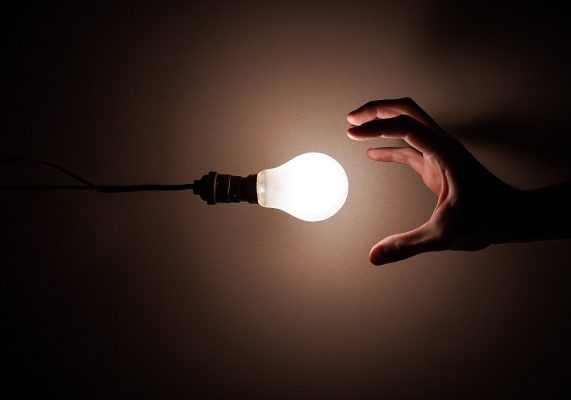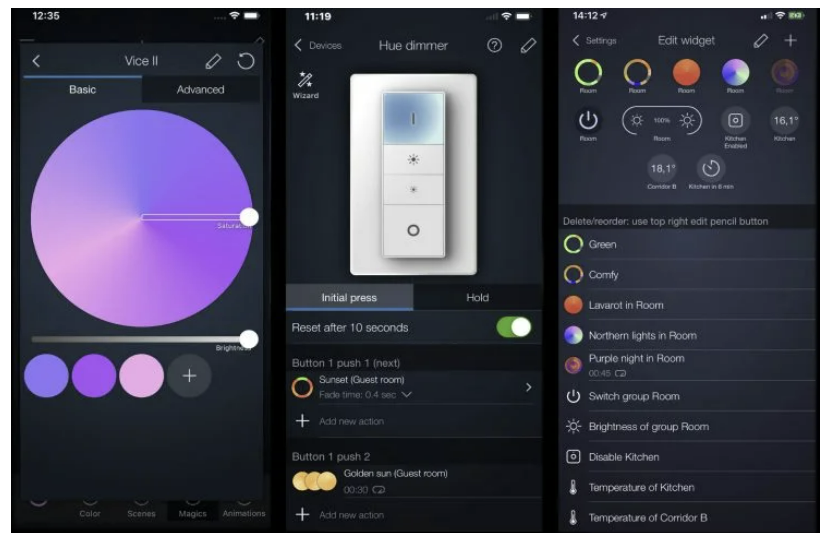One of the most important aspects of lighting is the ability to adjust the brightness. This is where dimming techniques come in, and in recent years LED dimming has evolved significantly. In this article we will briefly review the different dimming technologies available for Led lights, their advantages and disadvantages, and how to choose the right technology for your needs.This article is a continuation of the Guide to choosing a Led dimming technology.
What is dimming?
Dimming means the ability to adjust the brightness of a light source. This can be achieved by a variety of methods, such as changing the voltage (V) or current (A) applied to the light or by electronically adjusting the amount of light. Dimming is important for a number of reasons, including energy saving, mood lighting and creating the perfect atmosphere for different occasions.
Led dimming techniques
There are several different LED dimming technologies available, each with its own advantages and disadvantages. These include:

Analogue dimming techniques
OLD SCHOOL! Analogue dimming techniques are techniques that use analogue signals to control the intensity of LED lights. These techniques include potentiometer, resistive TRIAC and 0-10V dimming techniques.
Potentiometer dimming
Potentiometer dimming is a simple and straightforward dimming technique for adjusting the intensity of a LED light. It uses a variable resistor called a potentiometer to adjust the current flowing through the LED circuit. This method is relatively inexpensive and easy to install, but it has some limitations. For example, it is not suitable for dimming large quantities of LEDs, and in some cases may cause flickering or colour change.
Response to dimming
Resistor dimming is similar to potentiometer dimming, but it uses a fixed resistor to adjust the current flowing through the LED circuit. This method is also relatively inexpensive and easy to install, but it has some limitations. Like Potentiometer dimming, it is not suitable for dimming large amounts of LEDs, for example, and can in some cases cause flickering or colour change.
0-10V dimming
0-10V dimming is a more sophisticated method of controlling the intensity of LED light, using a low voltage signal to adjust the current flowing through the LED circuit. This method is suitable for dimming large quantities of LEDs and does not cause flickering or colour change. However, it is more expensive and complicated to install than other analogue dimming methods.
TRIAC pennies
TRIAC dimming is a form of analogue dimming that works by controlling the amount of power (W) delivered to the LED lights. This method is often used in residential applications because it is compatible with most traditional wall dimmer switches. However, it can sometimes cause LED lights to flicker or change colour.
TRIAC dimming is also known as PHASE CUT dimming. It’s the type of dimming pole. Phase disconnection works by cutting off part of the alternating current. The cut-off can be done in TRAILING EDGE or LEADING EDGE.
Analogue dimming techniques are generally cheaper than digital dimming techniques, but they do have some limitations. In addition, these technologies do not offer the advanced features of digital dimming technologies, such as remote control and “scenes”.
Digital dimming technologies
In addition to traditional analogue dimming technologies, there are now a number of digital dimming technologies available on the market. These technologies offer greater precision and control over dimming, as well as better energy efficiency and longer LED lifetime.
Pulse Width Modulation (PWM) dimming
Pulse Width Modulation (PWM) is a digital dimming technology that works by switching LED lights on and off rapidly at high frequency. This creates the illusion of dimmer light, while maintaining high efficiency and long life. PWM dimming is often used in commercial, industrial and domestic applications where precise control of light levels is required. The oldest digital dimming method.
DALI (Digital Addressable Lighting Interface) menus
Digital Addressable Lighting Interface (DALI) is a digital communication protocol that allows the control of individual LED lights or groups of lights. DALI allows precise control of the brightness and colour of lights, as well as the setting of schedules and “scenes”. It is often used in commercial and industrial environments, hotels and high-end homes.
Radio frequency (RF) dimming technology
Radio frequency dimming uses radio waves to communicate with and control LED lights. The method is very flexible and can control LED lights remotely, making it a popular choice for smaller sites. RF dimming is simple to install, but its signal only carries 20-30 meters and can be sensitive to RF interference.
Zigbee dimmers
Zigbee is a wireless communication protocol where devices create a mesh network. Zigbee is popular in home automation systems. It enables control of LED lights via a smartphone or tablet app and integration with other smart home devices such as thermostats and security systems. Zigbee dimming is often used in residential environments as it provides a convenient and easy-to-use solution for controlling LED lights.

Bluetooth Low Energy (BLE)
Bluetooth Low Energy (BLE) is a wireless communication protocol similar to Zigbee, but with a slightly shorter range. BLE is often used in smaller residential or commercial premises where shorter range is sufficient. Like Zigbee, BLE enables control of LED lights via a smartphone or tablet app and integration with other smart home devices.
Matter
Matter uses Thread technology. Matter is the latest dimming technology and communication protocol that allows devices to easily connect and communicate with each other over a low-power mesh network. It also uses WIFI and Bluetooth communication to connect to Matter devices. Matter devices can use TRIAC or PWM to dim LED lights. Like Zigbee, Matter enables control of LED lights via a smartphone or tablet app and integration with other smart home devices. The first Matter devices will not be released until 2023 and Matter will be Zigbee compatible, for example with a Philips HUE hub.
Hybrid dimming
Hybrid dimming is a combination of the above methods, using a combination of PWM, analogue and digital dimming to achieve the desired brightness level. This method is very efficient and can produce a wide range of brightness levels, but it can be more expensive and is not always compatible with all LED lights. Many Smart LED transformers are like this, such as 4IN1 transformers.

Choosing the right dimming technique
When choosing LED dimming technology, there are several factors to consider, such as cost, compatibility and the specific needs of your application.
- Cost: TRIAC dimming is generally the most cost-effective for older installations. Digital is best for new installations.
- Compatibility: make sure that the dimming technology you choose is compatible with the LED lights you use.
- Specific needs: take into account the specific needs of your application, such as whether flicker is an issue or you need a wide range of brightness levels.
Summary
In summary, there are different dimming technologies available for LED lights, each with its own unique advantages and disadvantages. Traditional analogue dimming techniques are simple and inexpensive, but lack the accuracy and control of digital dimming techniques. Digital dimming technologies such as DALI, Zigbee and RF offer more accuracy, control, energy efficiency and longer life for LED lights, but they can be more expensive and require more advanced technical skills. When choosing a dimming technique, it is important to take into account the specific needs and requirements of the site.
Led dimming technology is familiar to us
LedStore has been an expert in LED lighting and lighting design since 2010. We have our own product design, so our products are technically state-of-the-art. Products have quarantee for up to 7 years. We also carry out lighting maintenance.
We focus on temperature-controlled and high colour rendering luminaires, so they work brilliantly and last a long time. We make around. 500 lighting designs for our clients’ sites. Read more here or order a lighting design
We offer a service of custom-made LED strips, i.e. custom-made LED strips in aluminium profile. Also installed. Did you know? LedStore offers lighting design from 99 euros for the whole house!
Remember that we are always available to support you along the way, by email(myynti@ledstore.fi) and by phone (045 251 4510). As always, feel free to share photos of your own projects on social media at #ledstorefi IG and ledstore.fi FB. We love to see the cool things our LEDs do, and it helps to provide inspiration for those who are not sure about the power and awesomeness of LEDs. Did you know that we already have over 3500 pictures of our LED installations in our Gallery!
Photo gallery of Led lights:
Product gallery: pictures of products in different installation locations
Indirect light: indirect light in different spaces
Room-specific: Light in different rooms
References: complete houses that have been photographed

